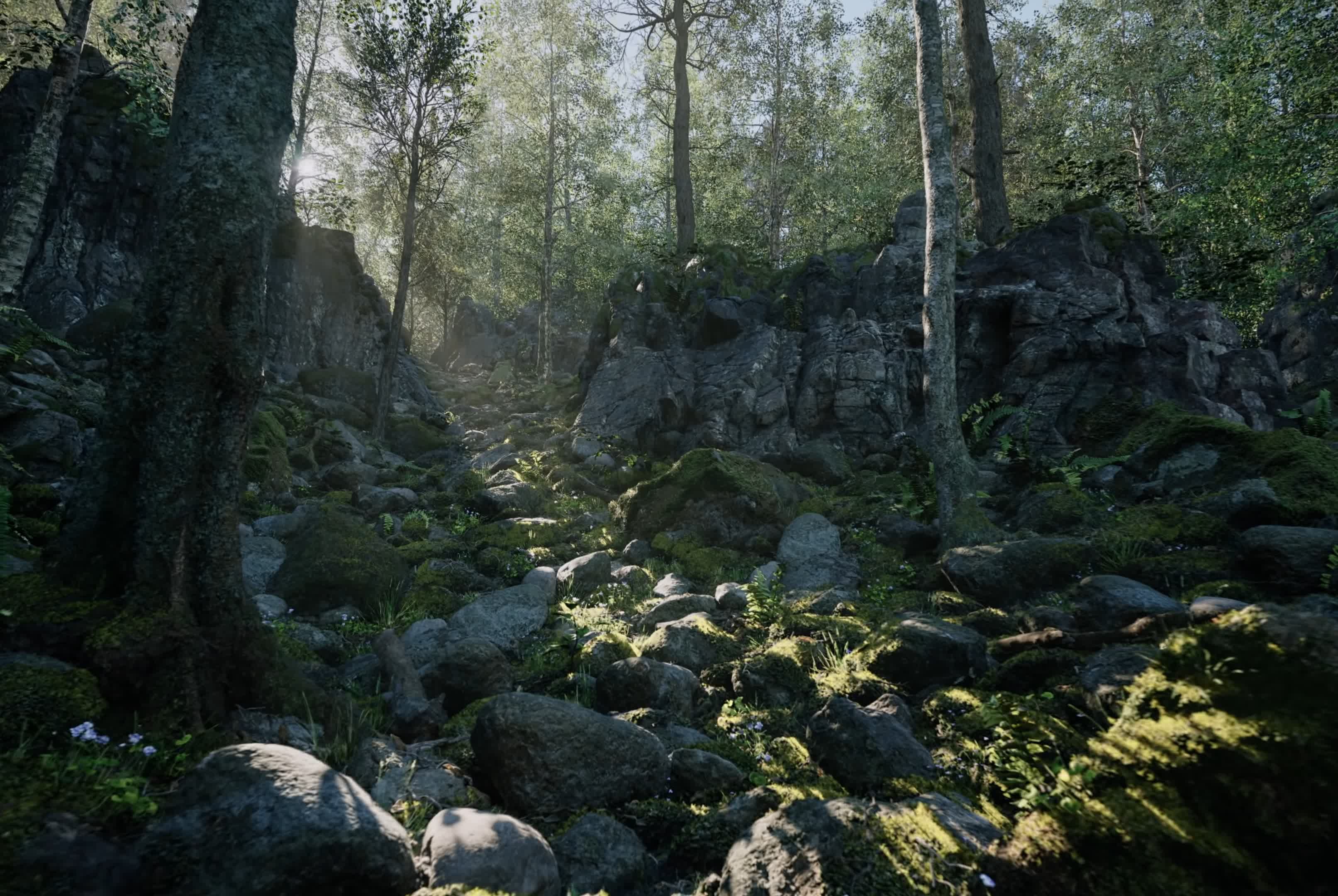As CPUs999 ArchivesGPUs continue to get more powerful with each new generation, the push for ever more realistic graphics in blockbuster games shows no signs of slowing down. Today's best-looking titles already look stunning, so how much better can they possibly get?
Which technologies will become as commonplace as texture filtering or normal mapping is today? What systems will help developers reach these higher standards? Join us as we take a look at what awaits us in the future of 3D graphics.

Before we head off into the future, it's worth taking stock of the advances in 3D graphics over the years. Much of the theoretical aspects of 3D rendering (e.g. vertex transformations, viewport projections, lighting models) are decades old, if not older.
Take the humble z-buffer, as an example. This is nothing more than a portion of memory used to store depth information about objects in a scene and is primarily used to determine whether or not a surface is hidden behind something else (which in turn allows objects to be discarded, instead of rendering them and can also be used to generate shadows).
The concept of the z-buffer is generally attributed to Ph.D. student Wolfgang Straßer, 1974, working at TU Berlin at the time. The first commercial hardware to make use of the buffer appeared within 5 years or so, but the general public would have to wait over 20 years, until the mid-90s, for the arrival of the Nintendo 64 and its z-buffer enabled Reality co-processor.

 Earth sends Cassini a whole lot of love after the mission comes to a bittersweet end
Earth sends Cassini a whole lot of love after the mission comes to a bittersweet end
 Here's a Halloween playlist for all your spooky music needs
Here's a Halloween playlist for all your spooky music needs
 Bathrobe Trump gets comfortable in some strange places with this Photoshop battle
Bathrobe Trump gets comfortable in some strange places with this Photoshop battle
 Instagram deserves more scrutiny after Russian troll farm investigation
Instagram deserves more scrutiny after Russian troll farm investigation
 Today's Hurdle hints and answers for March 18, 2025
Today's Hurdle hints and answers for March 18, 2025
 Waze Carpool is nothing like using Lyft and Uber — and that’s the point
Waze Carpool is nothing like using Lyft and Uber — and that’s the point
 'Fake news' has officially hit Britain and people can't cope
'Fake news' has officially hit Britain and people can't cope
 California just scored a major privacy win against facial
California just scored a major privacy win against facial
 What's new to streaming this week? (March 7, 2025)
What's new to streaming this week? (March 7, 2025)
 Twitter has a grand old time with Trump's unfinished sentence
Twitter has a grand old time with Trump's unfinished sentence
 Google's officially retiring Assistant
Google's officially retiring Assistant
 'Fake news' has officially hit Britain and people can't cope
'Fake news' has officially hit Britain and people can't cope
 Everything we expect to see at Google's Pixel 4 launch event
Everything we expect to see at Google's Pixel 4 launch event
 Here's a Halloween playlist for all your spooky music needs
Here's a Halloween playlist for all your spooky music needs
 Antigua GFC vs. Seattle Sounders 2025 livestream: Watch Concacaf Champions Cup for free
Antigua GFC vs. Seattle Sounders 2025 livestream: Watch Concacaf Champions Cup for free
 Ted Cruz congratulated a woman on having multiple sclerosis. Seriously.
Ted Cruz congratulated a woman on having multiple sclerosis. Seriously.
 In weird ad, Kellyanne Conway tells people to buy Ivanka's line of clothes
In weird ad, Kellyanne Conway tells people to buy Ivanka's line of clothes
 Why you should lie in your password
Why you should lie in your password
 Afghanistan vs. Australia 2025 livestream: Watch ICC Champions Trophy for free
Afghanistan vs. Australia 2025 livestream: Watch ICC Champions Trophy for free
 PlayStation 5 has a gimmicky new controller and an official name
PlayStation 5 has a gimmicky new controller and an official name
DeepSeek announces openTencent’s Supercell earned nearly $3 billion in 2024, up 77% yBaidu CEO says robotaxi business ‘scaleChinese GPU firm MetaX plans to lay off 200 employees ahead of IPO launch · TechNodeTSMC announces additional $100 billion investment in US chip expansion · TechNodeChina’s Lunar New Year box office tops $390 million on second day of holiday · TechNodeChina’s Geely reportedly set to make and sell vehicles with Renault in Brazil · TechNodeDeepSeek announces openXpeng Motors prepares for ADAS available outside of China: CEO · TechNodeVivo announces integration of DeepSeek into its mobile operating system · TechNodeJD Cloud unveils AI advancements at 2025 Cloud City Conference · TechNodeTSMC announces additional $100 billion investment in US chip expansion · TechNodeChinese automakers to stay ahead despite Tesla rolling out FSD features, expert says · TechNodeByteDance launches Seed Edge for AI innovation, aiming for AGI · TechNodeChina’s Geely reportedly set to make and sell vehicles with Renault in Brazil · TechNodeChina's Ehang and JAC to form joint venture for flying car production · TechNodeUS biggest importer of Chinese batteries for fifth straight year · TechNodeRoboSense delivers one millionth LiDAR sensor for humanoid robot Qinglong · TechNodeMeituan doubles down on AI in 2025 strategic plan · TechNodeGlobal tablet shipments rise 9.2% y Our Ongoing Battle with Jetlag Colleen Moore’s Fairy Castle—And Her Lost “Flaming Youth” When You Marry Someone Who Has the Same Last Name Looking at Vermeer’s Paintings in Manhattan We Are All Sensitive People: A Marvin Gaye Story Still Lifes Capture the Evolution of the Watermelon The Horror of Philosophy, the Philosophy of Horror What Happened to “O”? The Death of an Exclamation The “Romance” of Travel: Joseph Roth’s Hotel Years The Seagull Is Perhaps History’s Most Maligned Bird The World’s First Multicolor The Book Cover in the Weimar Republic Jean Pagliuso’s Poutry Suite Staff Picks: Robot Maids, Airships, Geocities by The Paris Review A Brief History of African Americans in Opera Staff Picks: Baseball Cards, Barbarian Days, Blow The Sex Ed Guide That Titillated Britain for Centuries Coming Soon: “The Unprofessionals,” A New Anthology A Partial List of Things to Dread About Spa Treatments Documenting the Doo
2.1785s , 10104.359375 kb
Copyright © 2025 Powered by 【1999 Archives】,Co-creation Information Network